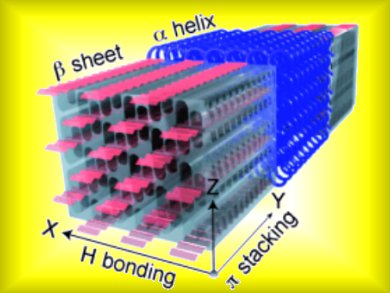In the Review in this issue, G. Rousseau and B. Breit discuss removable directing groups in organic synthesis and catalysis. What do you do if the existing functional group within a substrate is unsuited to achieve an efficient intramolecular reagent/catalyst delivery? In a Minireview, E. Meggers describes conventional and unusual enzyme inhibitor scaffolds. The Highlights deal with the metal-free synthesis of pyridines (K. Kral and M. Hapke), aromaticity in porphyrinoids (M. Bröring), and a chlorophyll with strongly red-shifted absorption (B. Kräutler).
In the Communications section, R. G. Cooks et al. present a synchronized mass spectrometry protocol with well-orchestrated microdroplet creation, nebulizing gas pulsing, and DAPI interface opening. N. Houbenov et al. succeeded in the preparation of a polymeric supramolecular framework solid with self-assembled cages based on two orthogonal shape-persistent motifs: alpha helix and beta sheet (see picture). P. Jena et al. discovered a series of magnetic superhalogens formed of (MnxCl2x+1)− units and characterized it by photoelectron spectroscopy, mass spectrometry, and theoretical studies.



